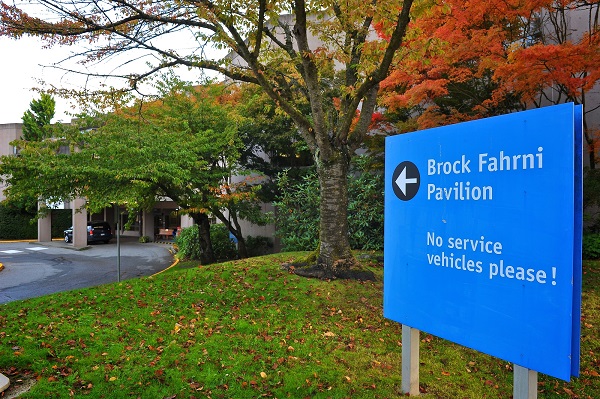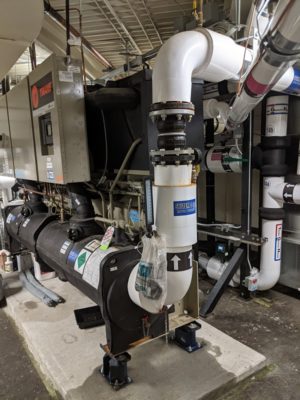
Health-care facilities like hospitals and long-term care homes are energy-intensive places. And their energy demands can get costly.
BC’s first health care organization to go all in on Renewable Natural Gas
But organizations like Providence Health Care in Vancouver are finding ways to care for its long-term care residents while lowering its environmental impact.
In collaboration with FortisBC, it has implemented innovative and cost-effective energy-efficiency upgrades to its heating equipment at one of its long-term care homes in Vancouver.
It has gone a step further by subscribing to FortisBC’s Renewable Natural Gas (RNG) program –the first British Columbia health-care organization to do this–which is helping to decarbonize its operations even more.
Together, these efforts are helping lower annual operational costs, reduce greenhouse gas (GHG) emissions all while ensuring access to reliable energy through the gas system. This project is also serving as a blueprint for use in its other long-term care homes.
Providence’s decade-long partnership with FortisBC
Providence operates acute-care hospitals and long-term care sites in Vancouver. Compassionate, respectful care is at the heart of everything it does.
For more than 10 years, Providence and FortisBC have worked together to improve the energy efficiency of Providence’s facilities. That is helping reduce energy costs.
“Patients and residents are the reason we do what we do, and why we continue to look for opportunities to make improvements that have a positive impact,” says Anthony Munster, Executive Director of Projects, Planning and Facilities Management at Providence. “Improving operations through energy efficiency upgrades allows us to make spaces more comfortable while also reducing our environmental impact and meeting our climate action goals.”
Improving energy efficiency
To better understand what type of upgrades would make a positive impact at its facilities, Providence listened to the feedback and concerns of residents. Recent summer heat domes prompted conversations around the need to add cooling into long-term care homes and make these spaces more comfortable for residents.
With this, Providence looked into adding cooling to one of its buildings. It then realized there was an opportunity to add cooling and save energy and lower GHG emissions by upgrading the heating system.
Providence chose its St. Vincent’s: Brock Fahrni long-term care home in Vancouver to install a new high-efficiency heating and cooling system. Brock Fahrni is home to 148 residents, many of them armed forces veterans.
By replacing older equipment with high-efficiency technology, Providence found an opportunity to improve multiple systems at Brock Fahrni. A key consideration with these upgrades was to ensure it continued to have access to reliable energy. It uses a significant amount of energy across its sites, from heating to sterilization and laundry.
“FortisBC’s ability to provide us with a reliable source of low carbon Renewable Natural Gas has been essential in ensuring the success of this project,” says Munster. “They have supported us in finding the best way forward and covered some of the costs for this new high-efficiency equipment that is helping us achieve our organizational goals. We look forward to working together to roll out similar initiatives at our other sites.”
Providence realized it could continue to use gas in its operations while making it more energy efficient by capturing what would be wasted heat and making it usable. There was potential to reuse warm exhausted air throughout the building to lower energy consumption and we found a technology, called a thermal gradient header, which could do just that.
A thermal gradient header system is designed to transfer thermal energy through a set of connected pipes. This efficient technology provides simultaneous heating and cooling, essentially functioning as a smart hub for thermal energy that is transported to different zones based on the energy demands of the building. On top of that, Providence installed a high-efficiency condensing boiler to meet the heating demands of the building when there isn’t enough waste heat generated by the thermal gradient header system.

Making a sustainable impact in health care
Providence also looked to change the way it received energy at the long-term care home. It was decided that Providence would receive energy directly from FortisBC rather than using energy generated from a nearby steam plant, which is typically less efficient. By cutting out the need for steam heating and with the addition of a new boiler, Providence improved the efficiency of its operations. This also created an opportunity for Providence to further reduce its environmental impact.
By working with Elizabeth Manhas, a key account manager at FortisBC, Providence learned it could further reduce GHG emissions through the energy company’s RNG program. FortisBC customers can subscribe to this program to designate a portion of their gas use as low-carbon RNG. Providence Health Care is the first health care organization to sign up for the program and is now designating 100 per cent of its gas use at this care home as RNG.
Big drop in energy use
Providence is seeing the benefits from the project. It lowered its annual energy use at the facility by more than 10,500 gigajoules, the energy equivalent to heating almost 125 homes for a year. It’s also saving around $100,000 in annual operational costs which helped cover the cost of becoming an RNG customer without impacting the overall budget for patient care.
Providence has seen a reduction of 485 tonnes of carbon dioxide equivalent and received more than $300,000 in incentives through FortisBC’s Custom Efficiency Program, helping to cover a portion of the costs for the high-efficient technology.
The significant cost savings that investing in energy efficiency can have lets health care organizations, like Providence, take the next step. Providence found unique ways to decarbonize operations and put money into services for patients and residents.
Replicating energy-efficiency success across other facilities
The successful completion of these energy efficiency upgrades supports Providence Health Care’s Greenhouse Gas Emissions Reduction Project. This project targets an 80 per cent reduction in GHG emissions by 2024 at its six long-term care sites: St. Vincent’s: Langara, Mount Saint Joseph Hospital, Holy Family Hospital, Youville, St. Vincent’s: Honoria Conway and St. Vincent’s: Brock Fahrni.
To achieve this target, Providence is looking to replicate this project at those sites. Replicable projects are incredibly valuable because the same or very similar process can be taken from one building to another without having to design a different system. It can become a quick and easy win for an organization to see energy and cost savings.
“It’s inspiring to see how energy efficiency upgrades can have an environmental impact while also improving the spaces for the residents and patients in the buildings,” says Manhas. “It’s a win-win! (The partnership) with Providence Health Care has shown the value of working together to ensure these projects are successful and cost-effective. Providence Health Care is an exceptional leader in its sector when it comes to implementing energy efficiency upgrades that lower energy use and then taking the next step by using RNG to further reduce GHG emissions.”
This article was submitted by Providence Health Care and FortisBC Communications.

